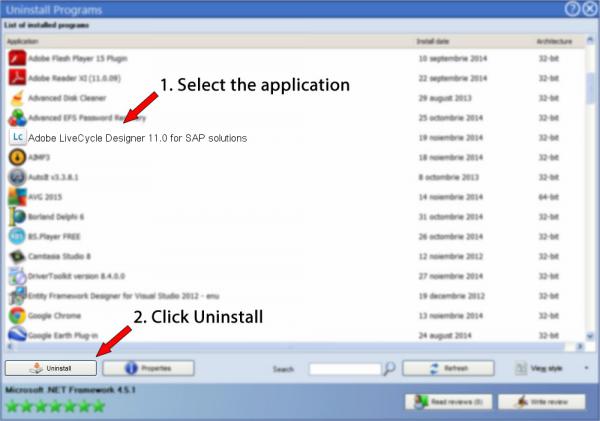
If you want to keep the standard version available as well it’s recommended to save the new form as a new variant. The new form can be uploaded to C4C as a new variant or replacing the existing variant. Completed Table in Adobe LiveCycle Designer The end result in the Adobe LiveCycle Designer can look like the example below. After creating a table, setting the right table conditions and doing the data bindings for all the required fields the form can be saved. There for example the name ($.OtherParty.FormattedName) address, mobile and mail are available. In the case of wanting to add the involved parties in a table it is required to go to the “OtherParty” databinding set. There the possibility is to add a “Data Binding”. On the right side navigate to Object > Binding. Select the cell under Row1 to create a binding that matches the description that is entered in the HeaderRow. Select the cells of the header row (HeaderRow) to enter the required name, for example for involved parties it can be useful to use the following: Party Role Code, Name, Address, Phone, Mail. This provides the option on the right to determine the look and feel of the table like amount of columns, row shading and more. Select the newly added table on the left in the hierarchy view. Important is to check “Include Header Row in Table” which provides the option to generate the column headers as required. Adding a table in Adobe LiveCycle DesignerĪdding a table can be done via the top menu where you need to select “Table” and “Insert Table”. To cover the requirement that all entries are shown a table is required which will only shows additional rows once entries are provided.

That is the reason why adding a normal text field will not cover the requirement. The amount of added parties and products can vary. In this case we want to show all custom created involved parties and also all products that are added to a ticket. Once the form template has been opened in this tool navigate to the section where you want the information to be added. xdp file in the Adobe LiveCycle Designer.
ADOBE LIVECYCLE DESIGNER FREE DOWNLOAD SAP ZIP FILE
Standard Ticket Output Formĭownload the relevant form template to your local drive, extract the contents of the resulting zip file and open the. This blog will guide you in the steps in adding tables to your output forms. The tricky part in this case was that it wasn’t 1 field with 1 value but that the data was gathered in a table and could therefore contain multiple entries.

Normally adding a new field and binding that field to the technical field from C4C is not that difficult. Therefore, changes in the Adobe LiveCycle Designer are required. However the standard ticket summary output form didn’t contain all information we wanted.

In this particular project output forms where shared with external partners. In my last SAP Service Cloud project we implemented the SAP Service Ticket Management process.


 0 kommentar(er)
0 kommentar(er)
